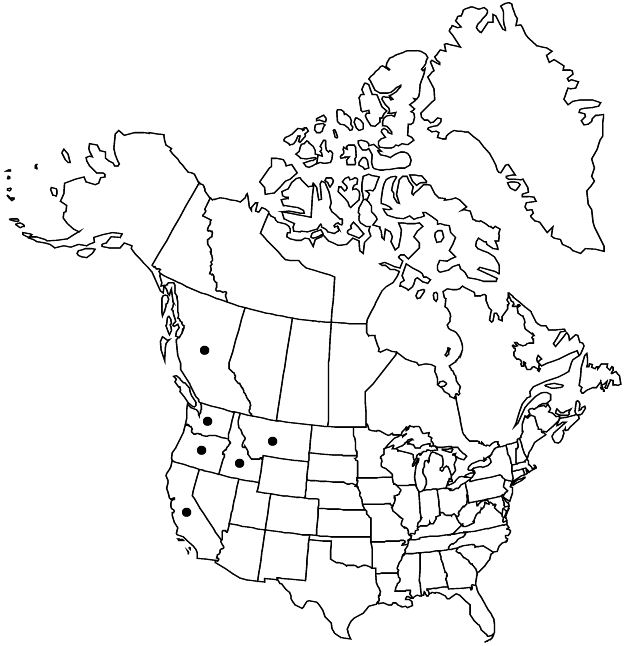Difference between revisions of "Rosa gymnocarpa"
in J. Torrey and A. Gray, Fl. N. Amer. 1: 461. 1840.
imported>Volume Importer |
RevisionBot (talk | contribs) m (Bot: Adding category Revised Since Print) |
||
| (2 intermediate revisions by 2 users not shown) | |||
| Line 1: | Line 1: | ||
{{Treatment/ID | {{Treatment/ID | ||
|accepted_name=Rosa gymnocarpa | |accepted_name=Rosa gymnocarpa | ||
| − | |accepted_authority=Nuttall | + | |accepted_authority=Nuttall |
|publications={{Treatment/Publication | |publications={{Treatment/Publication | ||
|title=in J. Torrey and A. Gray, Fl. N. Amer. | |title=in J. Torrey and A. Gray, Fl. N. Amer. | ||
| Line 52: | Line 52: | ||
-->{{#Taxon: | -->{{#Taxon: | ||
name=Rosa gymnocarpa | name=Rosa gymnocarpa | ||
| − | |authority=Nuttall | + | |authority=Nuttall |
|rank=species | |rank=species | ||
|parent rank=section | |parent rank=section | ||
| Line 63: | Line 63: | ||
|publication year=1840 | |publication year=1840 | ||
|special status=Endemic;Illustrated | |special status=Endemic;Illustrated | ||
| − | |source xml=https:// | + | |source xml=https://bitbucket.org/aafc-mbb/fna-data-curation/src/2e0870ddd59836b60bcf96646a41e87ea5a5943a/coarse_grained_fna_xml/V9/V9_172.xml |
|subfamily=Rosaceae subfam. Rosoideae | |subfamily=Rosaceae subfam. Rosoideae | ||
|tribe=Rosaceae tribe Roseae | |tribe=Rosaceae tribe Roseae | ||
| Line 72: | Line 72: | ||
}}<!-- | }}<!-- | ||
| − | -->[[Category:Treatment]][[Category:Rosa sect. Rosa]] | + | --> |
| + | |||
| + | [[Category:Treatment]] | ||
| + | [[Category:Rosa sect. Rosa]] | ||
| + | [[Category:Revised Since Print]] | ||
Latest revision as of 17:19, 6 November 2020
Shrubs or subshrubs, usually loosely clustered. Stems erect, sometimes spreading, slender, (1–)3–15(–25) dm, sparsely or densely branched; bark sometimes glaucous, reddish brown with age, glabrous; infrastipular prickles 0–2, erect, subulate, 2–8(–10) × 1.5 mm, terete, internodal prickles similar or smaller, sparse to dense, sometimes absent on distal stems, mixed with aciculi, base terete, eglandular. Leaves (2–)4–10(–17) cm; stipules 5–15 × 2–5 mm, auricles flared, 2–3 mm, margins entire, stipitate-glandular, surfaces glabrous, eglandular; petiole and rachis with pricklets, glabrous, rarely finely puberulent, sparsely stipitate-glandular; leaflets 5–9(–11), terminal: petiolule (2–)5–12(–20) mm, blade elliptic to obovate or ovate to nearly orbiculate, (4–)10–40(–60) × (4–)10–20(–40) mm, membranous to ± leathery, margins 2+-serrate, teeth 7–13 per side, obtuse to acute, gland-tipped, apex obtuse, sometimes nearly acute, rounded, or truncate, abaxial surfaces pale green, glabrous, eglandular, adaxial green, dull, glabrous. Inflorescences corymbs, usually 1–3-flowered, rarely in multi-flowered candelabras. Pedicels erect, ± curved as hips mature, slender, 10–25(–35) mm, glabrous, stipitate-glandular, rarely eglandular (except var. serpentina); bracts some early caducous, 1 or 2, attached near pedicel bases, ovate or lanceolate, 4–12 × 2–8 mm, margins entire, short stipitate-glandular, apex acute or rounded, surfaces glabrous, eglandular. Flowers 1.5–3 cm diam.; hypanthium narrowly ovoid-urceolate, 2–4 × 1.5–2 mm, glabrous, eglandular, neck 0–1 × 1.5 mm; sepals ascending to reflexed, lanceolate, 5–10 × 2–3 mm, tip 0.1–5 × 1 mm, margins entire, abaxial surfaces glabrous, eglandular, sometimes stipitate-glandular; petals single, deep pink, 8–15 × 6–13 mm; stamens 57; carpels 3–12(–16), styles exsert 1–1.5 mm beyond stylar orifice (1 mm diam.) of hypanthial disc (2–4 mm diam.). Hips scarlet, irregularly ellipsoid or ellipsoid to nearly globose, 7–15 × 5–13 mm, fleshy, glabrous, eglandular, neck 0–2 × 1.5–2.5 mm; sepals, styles, and distal receptacle collectively deciduous at fruit maturity along well-defined, circumscissile line, erect to reflexed. Achenes basiparietal, (1–)4–10(–12), cream to pale brown, (3–)4.5–7 × 2–4 mm.
Distribution

B.C., Calif., Idaho, Mont., Oreg., Wash.
Discussion
Varieties 2 (2 in the flora).
Rosa gymnocarpa is most easily distinguished in mature fruit, in that the sepals collectively and cleanly separate from the hip together with styles and, sometimes, associated hypanthia. Other diagnostic features include solitary to few, small flowers, stipitate-glandular pedicels, hypanthia extremely small in bud, and glabrous leaflets doubly glandular-toothed. The species is also one of the relatively few roses that flourishes in partial shade. Rosa gymnocarpa occurs in forested areas from British Columbia and Montana to central California, with disjunct populations in southern California; it skirts the Great Basin, with the possible exception of the type of R. leucopsis Greene, a likely synonym, purportedly from central Oregon’s sagebrush steppe, which is otherwise devoid of the species (A. Cronquist and N. H. Holmgren 1997).
The distinctive features of Rosa gymnocarpa have been used as the basis for sect. Gymnocarpae Crépin. Recognition of that section is not supported by the molecular analysis by A. Bruneau et al. (2007), in which R. gymnocarpa occurs in a clade with R. pinetorum and one sample of R. californica, separate from a distinct clade that groups diverse specimens of R. bridgesii, R. spithamea, and some Asian species of sect. Rosa.
Selected References
None.
Key
| 1 | Leaflets (5–)7–9(–11), terminal blades elliptic to narrowly obovate or ovate, (5–)10–30(–60) mm, apices usually obtuse, sometimes nearly acute or rounded; pedicels (10–)15–25(–35) mm; stems 3–15(–25) dm; light shade (rarely full sun) in open woodlands, forest edges, often near streams or rocky sites; s British Columbia to s California, e to Montana. | Rosa gymnocarpa var. gymnocarpa |
| 1 | Leaflets 5(–7), terminal blades broadly elliptic to obovate or ovate to nearly orbiculate, 4–20 mm, apices usually broadly obtuse to rounded, sometimes nearly truncate; pedicels 10–15 mm; stems (1–)3–6(–13) dm; full sun in roadsides, ridges, and other openings in chaparral and stunted forests on ultramafic substrates; Siskiyou Mountains, sw Oregon and nw California. | Rosa gymnocarpa var. serpentina |